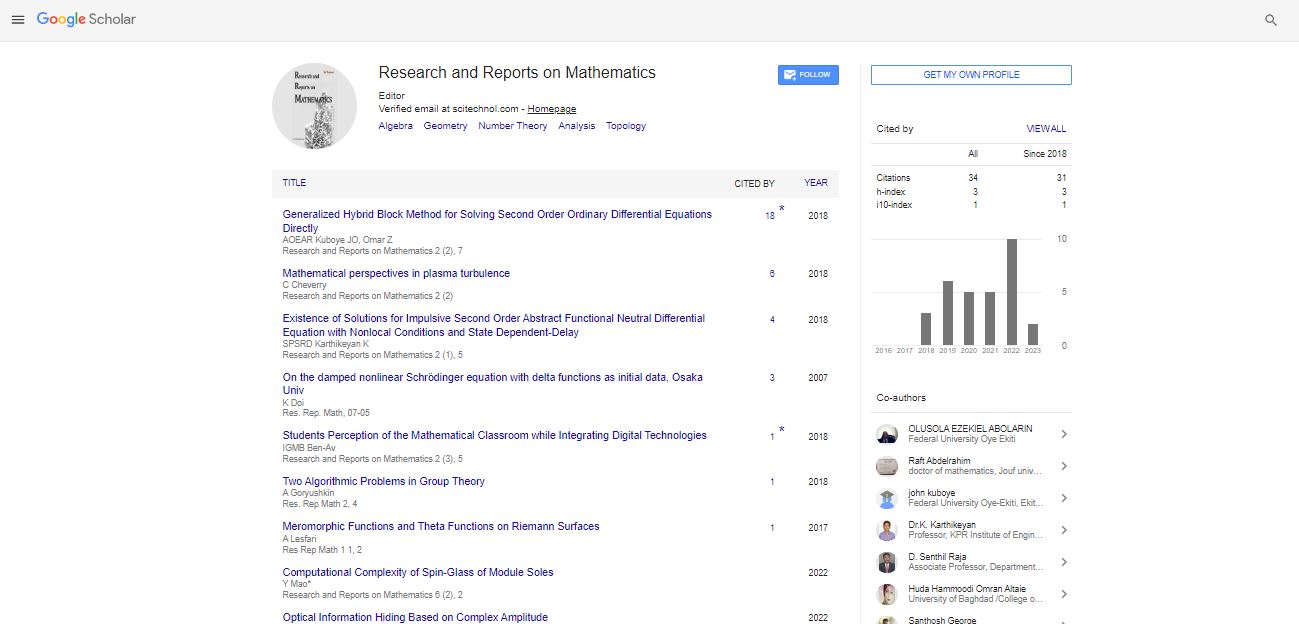Commentary, Met Mater Int Vol: 8 Issue: 1
Rare Earth Metals: Balancing Global Demand with Environmental and Geopolitical Realities
Jiawei Peng*
1Department of Urban Environment and Health, Institute of Urban Environment, Chinese Academy of Sciences, Xiamen, China
*Corresponding Author: Jiawei Peng,
Department of Urban Environment and
Health, Institute of Urban Environment, Chinese Academy of Sciences, Xiamen,
China
E-mail: peng@gia.cas.cn
Received date: 24 February, 2024, Manuscript No. RRMT-24-136643;
Editor assigned date: 28 February, 2024, PreQC No. RRMT-24-136643 (PQ);
Reviewed date: 14 March, 2024, QC No. RRMT-24-136643;
Revised date: 21 March, 2024, Manuscript No. RRMT-24-136643 (R);
Published date: 28 March, 2024, DOI: 10.4172/Rrmt.10001200
Citation: Peng J (2024) Rare Earth Metals: Balancing Global Demand with Environmental and Geopolitical Realities. Met Mater Int 8:1.
Description
Rare Earth Metals (REMs) plays an important role in numerous high-tech applications, from electronics to renewable energy systems. However, the global supply chain of REMs faces significant challenges, including geopolitical tensions, environmental concerns, and supply chain vulnerabilities. This manuscript provides a comprehensive overview of the REMs supply chain, highlighting key challenges, emerging opportunities, and strategies for achieving a more sustainable and resilient supply chain. Rare earth metals (REMs) are a group of 17 elements that are essential components in various advanced technologies, including smartphones, electric vehicles, wind turbines, and defenses systems. Despite their name, REMs are not actually rare in the Earth's crust, but they are often found in low concentrations and are challenging to extract and process economically.
As a result, the REMs supply chain is complex and highly concentrated, with significant implications for global trade, technological innovation, and environmental sustainability. The REMs supply chain encompasses a series of interconnected processes, including mining, extraction, processing, refining, manufacturing, and recycling. The majority of REMs production is concentrated in China, which controls a significant portion of the world's REMs reserves and production capacity. This concentration has raised concerns about supply chain vulnerabilities and geopolitical risks, especially given China's history of export restrictions and trade disputes related to REMs. Several challenges pose significant risks to the stability and sustainability of the REMs supply chain: dominance of China in REMs production has led to concerns about supply chain dependencies and the potential for trade disruptions.
REMs mining and processing can have significant environmental consequences, including habitat destruction, water pollution, and radioactive waste generation. The REMs supply chain is susceptible to disruptions from natural disasters, political unrest, and market fluctuations, which can lead to supply shortages and price volatility. The rapid growth of high-tech industries reliant on REMs has increased demand for specific elements, leading to concerns about future supply constraints and material substitution challenges. Despite these challenges, there are several emerging opportunities for improving the sustainability and resilience of the REMs supply chain: Efforts are underway to develop alternative sources of REMs outside of China, including examination projects, recycling initiatives, and investments in new extraction technologies.
Recycling and recovery of REMs from end-of-life products and industrial waste streams offer a potential source of secondary supply and reduce the environmental footprint of REMs production. Industry collaborations and regulatory frameworks aimed at promoting ethical and sustainable practices in REMs mining and processing can help address environmental and social concerns. Advances in extraction, processing, and recycling technologies are opening up new possibilities for improving the efficiency and environmental performance of the REMs supply chain. Achieving a more sustainable and resilient REMs supply chain will require a coordinated effort from industry, government, and civil society.
Greater transparency in the REMs supply chain can help identify and mitigate environmental and social risks, improve market efficiency, and build trust among stakeholders. Continued investment in research and development is essential for advancing technologies for REMs extraction, processing, recycling, and substitution, as well as developing alternative materials and supply chain models. Multilateral collaboration and partnerships are needed to address shared challenges in the REMs supply chain, including harmonizing regulatory standards, promoting responsible sourcing practices, and building capacity in developing countries. Developing robust risk management strategies, such as diversifying supply sources, building strategic stockpiles, and improving supply chain visibility and flexibility, can help mitigate the impact of supply disruptions and market uncertainties.
Conclusion
The REMs supply chain plays an essential role in enabling technological innovation and economic development, but it faces significant challenges related to geopolitics, environmental sustainability, and supply chain resilience. Addressing these challenges will require a concerted effort from stakeholders across the value chain to promote transparency, innovation, and responsible practices. By embracing emerging opportunities and adopting a holistic approach to sustainability, the REMs industry can build a more resilient and sustainable supply chain that meets the needs of future generations.
 Spanish
Spanish  Chinese
Chinese  Russian
Russian  German
German  French
French  Japanese
Japanese  Portuguese
Portuguese  Hindi
Hindi 